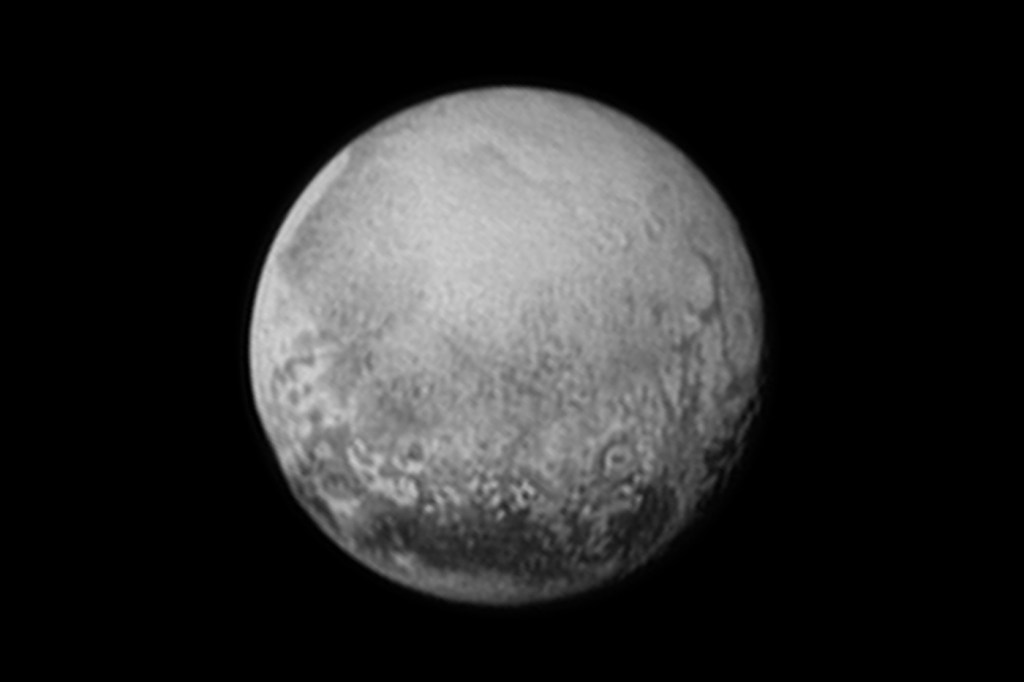What we can learn from NASA’s mission to Pluto

I love seeing new faraway images taken from space, and on Monday—the day before the NASA New Horizons spacecraft’s historic flyby of Pluto—I found myself talking to someone who shares that interest: Northeastern’s Andrew Gouldstone, associate professor of mechanical and industrial engineering and associate chair of mechanical engineering.
“I know what you mean,” Gouldstone said in a phone interview Monday afternoon. “When I get stressed, I can always look at pictures of Saturn taken by (NASA’s) Cassini.”
So count Gouldstone among those who will be anxiously waiting to see what cool images and scientific data New Horizons sends back after Tuesday’s flyby. After launching nine years ago, the spacecraft will come within 7,767 miles of the dwarf planet at about 31,000 miles per hour. In fact, mission scientists on Monday announced that the mission has now settled a decades-long debate: Pluto is 1,473 miles in diameter, which is larger than many previous estimates.
Gouldstone is also the faculty adviser for the Northeastern chapter of the American Institute of Aeronautics, whose students recently undertook their toughest mission to date: competing in NASA’s Student Launch Initiative. The competition tasked student teams with designing and building a rocket. That work, they were told, could possibly inspire how NASA approaches future missions to Mars.
Andrew Buggee, S’16, the student organization’s past president, wrote in an email to me Monday night that he’s engaged many students in conversation about the Pluto mission. He noted that many non-science majors he’s spoken with have been particularly interested in Pluto’s demotion from its status as a planet not long after the New Horizons launch, and they hope this mission could reverse its rank. “The fact that non-science majors share the same wonder and enthusiasm about our most distant neighbor in the solar system makes me very hopeful for the future of space exploration,” he wrote.
Regardless of whether students are interested in the New Horizons spacecraft, Gouldstone said all engineering students can learn an important lesson about “hands-off engineering” from the Pluto mission.
“Our students love being hands-on, and they are always willing to take something, built it, tinker with it, and adjust it,” he explained. “But what if that something is 100,000 miles away, or 3 billion miles away like New Horizons? If something goes wrong, you can’t just go up there and fix it. You have to make sure that you’ve designed it to work properly when you’re not there to take care of it.”
New Horizons launched on Jan. 19, 2006, and about a year later it flew by Jupiter, getting a gravity assist that saved three years of flight time. Fully fueled, it weighed just over 1,000 pounds at launch. Designed to operate on a limited power source, the spacecraft needs less power than a pair of 100-watt light bulbs to complete its mission at Pluto.
Gouldstone said that students should take note of the immense amount of detail and confidence NASA engineers put into creating a spacecraft capable of traveling 3 billion miles away, knowing “we have one shot at this.” That’s a lesson, he said, young engineers should apply to whatever they’re working on, whether they’re designing an integrated circuit or building an aircraft or a bridge. “This Pluto mission is an extreme and visible public demonstration of this idea,” he said. “That’s the most valuable lesson our engineering students can learn from this.”
Gouldstone is not a planetary scientist; his research focuses in large part on biomechanics and materials science. But he told me he was drawn to the sciences and ultimately his career from studying planets as a child. “I like to think anybody who got into science as a kid started off reading about planets, dinosaurs, or hurricanes,” he said.
At the heart of his interest in the planets, Gouldstone explained, is the same thing that he said has driven space missions for decades: an innate curiosity of what is around us. He said the New Horizons mission has reminded him that in his own research, it’s OK to be curious.
“I think what this mission has also shown is that we’re still allowed to be curious about stuff, and we’re still explorers,” he said.




